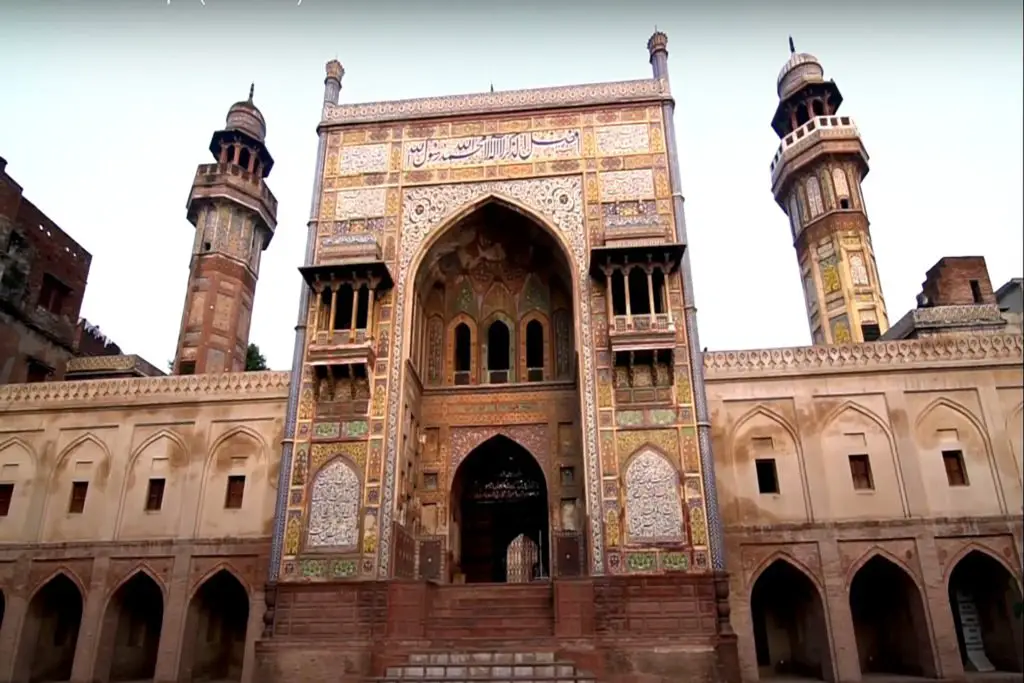Attock Fort is a magnificent fortification located in the city of Attock, Punjab, Pakistan. Built during the reign of the Mughal Emperor Akbar in the late 16th century, the fort served as a crucial military stronghold for centuries. It has witnessed the rise and fall of various empires and has played a significant role in shaping the history of the region.
Today, Attock Fort stands as a testament to the architectural prowess and military might of the Mughal Empire. It is a popular tourist destination and a must-visit for history buffs and architecture enthusiasts alike.
Attock Fort Location
Attock Fort, also known as “Qila Attock,” is a historic fort located in the town of Attock in the Punjab province of Pakistan. The fort is situated on the banks of the Indus River and was built during the reign of the Mughal Emperor Akbar in the 16th century.
History of Attock Fort:
The fort has a rich history and has been witness to many important events in the region. It was originally built to protect the Mughal Empire’s northwestern frontier from invaders. Later, it was also used as a stronghold by the Sikhs and the British during their respective rule in the region.
The history of Attock Fort can be traced back to the reign of the Mughal Emperor Akbar, who commissioned its construction in 1581. The fort was built on the banks of the River Indus and served as a strategic military stronghold to protect the empire’s northwestern frontier from invading forces.
Over the centuries, the fort was occupied by various empires, including the Sikhs, the British, and the Afghans. In the 19th century, the British converted the fort into a prison, and it remained so until Pakistan gained independence in 1947.
Architecture of Attock Fort:
The fort’s architecture is a blend of Mughal and Sikh styles. The fort’s walls are made of solid stone blocks, which are approximately 12 meters high and 6 meters wide. The fort has two main gates, one on the eastern side and the other on the western side.
The eastern gate, which is the main entrance, leads to a large courtyard that contains various buildings, including a mosque, a haveli, and a Baoli (stepwell). The haveli was once used as a residence for the fort’s officers and officials, while the Baoli was used as a source of water for the fort’s inhabitants.
The western gate leads to a narrow passage that leads to a small courtyard containing a well and a small room. This room is said to have been used as a dungeon during the fort’s heyday.
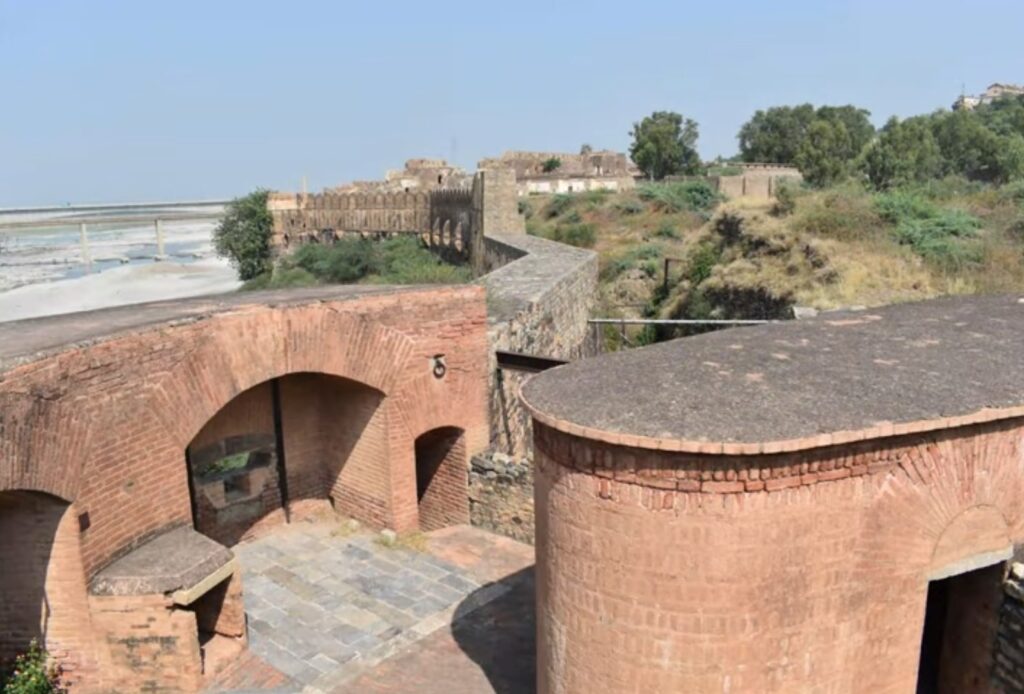
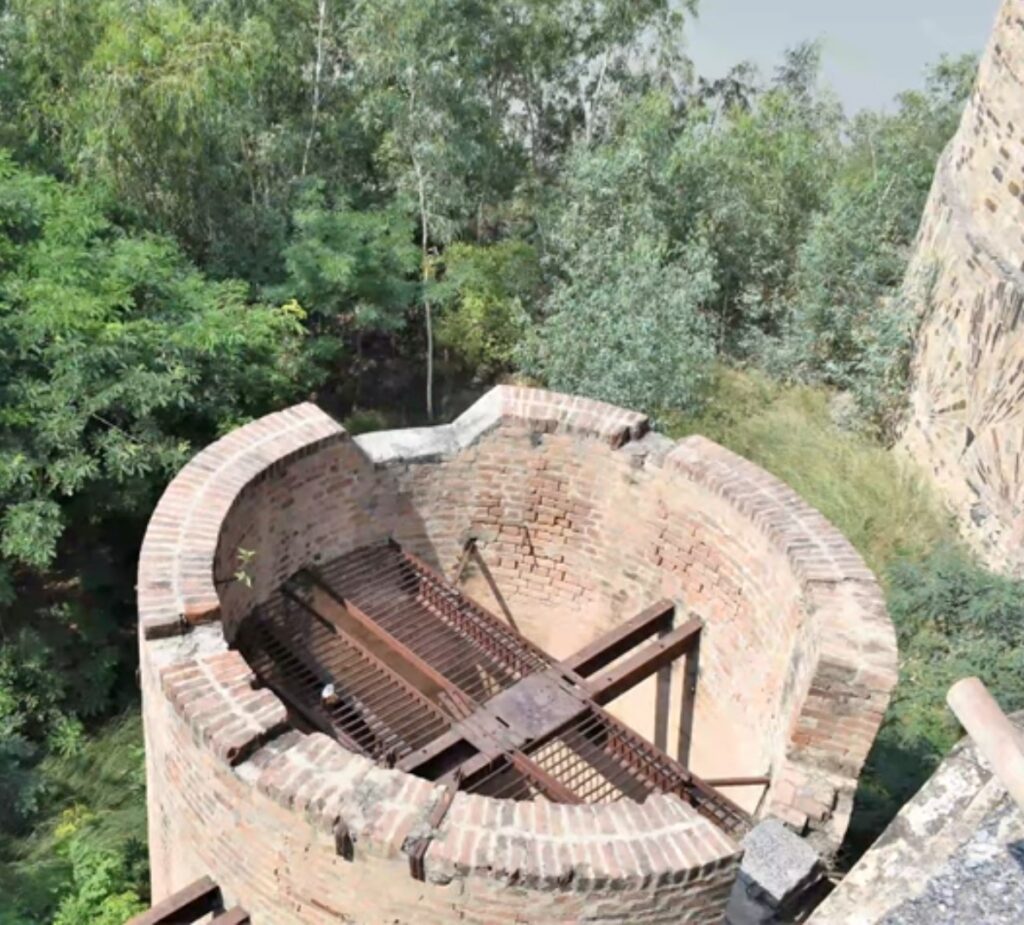
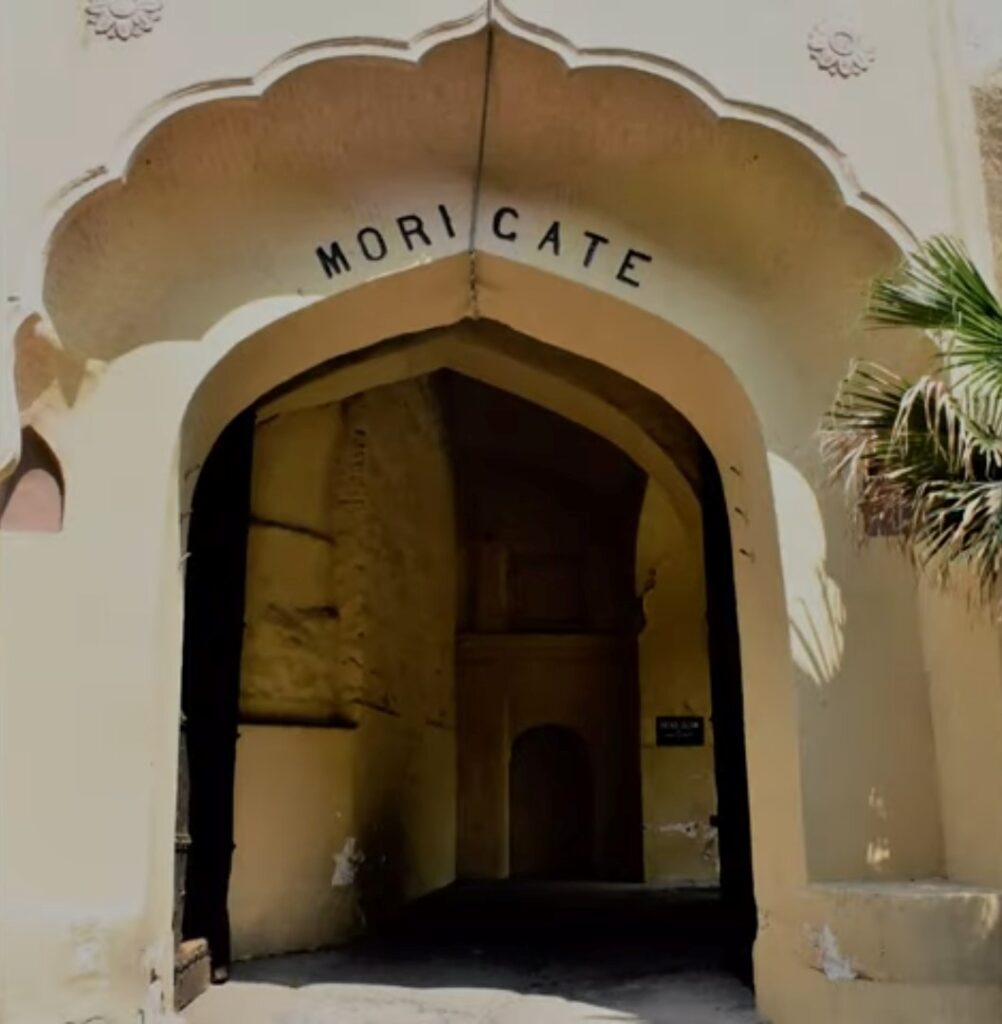
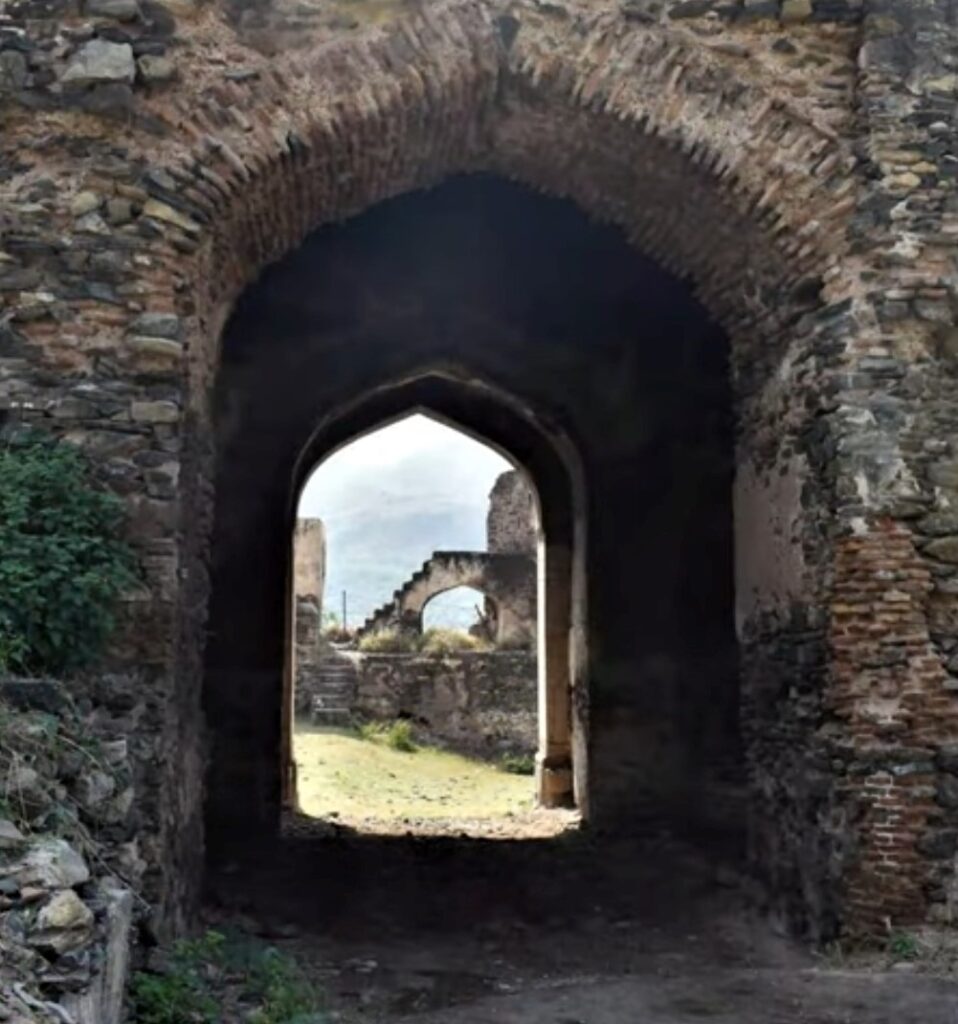
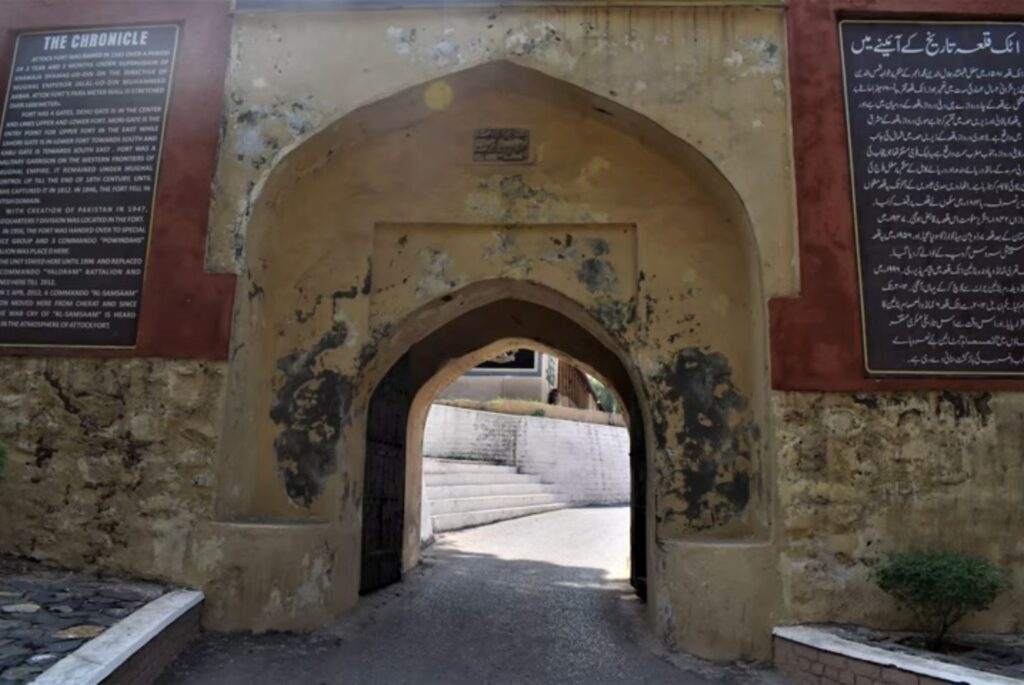
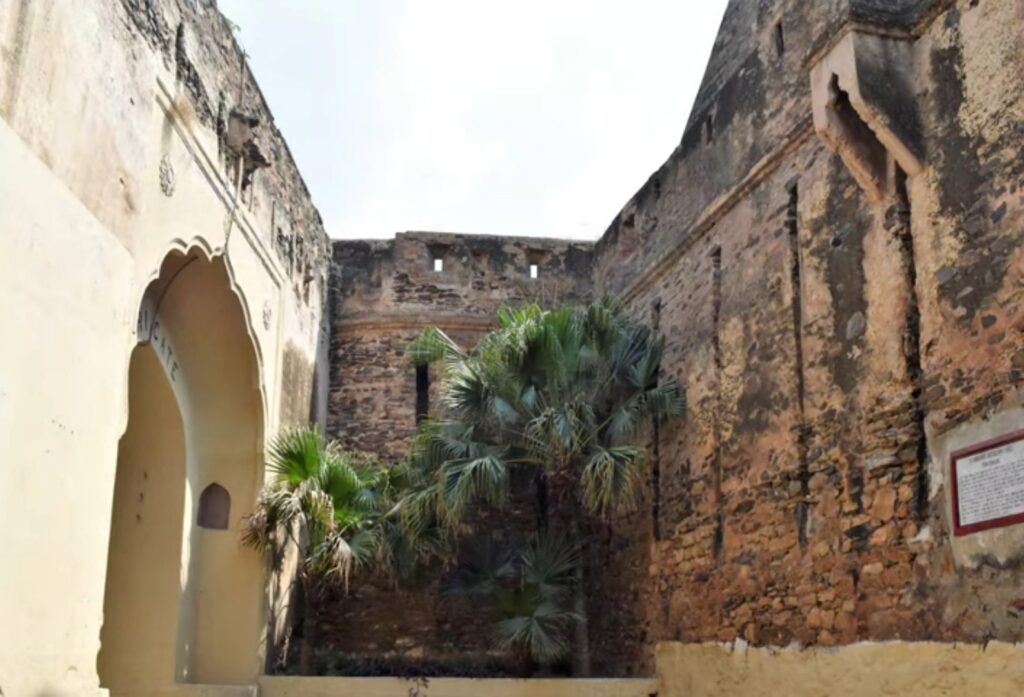
Attock Fort is a magnificent example of Mughal architecture. The fort is spread over an area of 12 acres and features thick walls and bastions that are 40 feet high. The fort has two gates: the Delhi Gate and the Kabul Gate. The Delhi Gate faces towards the east, while the Kabul Gate faces towards the west.
The fort’s interior is divided into different sections, each with its own set of buildings and courtyards. The buildings within the fort include the Sheesh Mahal, or Palace of Mirrors, which was used by the Mughal emperors as a summer palace. The fort also houses a mosque, which is said to have been built by Emperor Aurangzeb.
One of the most striking features of Attock Fort is its underground tunnels, which run beneath the fort’s walls and connect the different sections. These tunnels were used by soldiers to move quickly and secretly within the fort and were also used to store ammunition and supplies.
The western gate leads to a narrow passage that leads to a small courtyard containing a well and a small room. This room is said to have been used as a dungeon during the fort’s heyday.
The fort’s most impressive feature is its bastions, which are located at each corner of the fort’s walls. The bastions are approximately 18 meters high and are designed to provide a panoramic view of the surrounding area. The bastions are connected by a rampart that runs along the perimeter of the fort.
The fort also has a small museum that houses various artifacts related to the fort’s history. The museum contains weapons, armor, and other items that were used by the fort’s defenders over the centuries.
Visiting Attock Fort:
Attock Fort is a popular tourist destination and can be easily reached by road from Islamabad, the capital of Pakistan. The fort is open to visitors every day, and there is a nominal entry fee.
Visitors to the fort can explore its various buildings and courtyards, walk along its walls, and take in the stunning views of the surrounding landscape. The fort is also home to a small museum, which showcases artifacts from the fort’s history and provides visitors with a deeper insight into the fort’s significance.
Visitors to the fort can also enjoy a boat ride on the Indus River, which offers stunning views of the fort and the surrounding landscape. The fort is also located close to the historic town of Attock, which has many interesting places to visit, including the Attock Khurd Bridge and the Attock Shahi Mosque.
Attock Fort is a stunning example of Mughal architecture and a testament to the military might of the Mughal Empire. Its rich history, striking design, and underground tunnels make it a must-visit for anyone interested in history or architecture. Visiting Attock Fort is a unique and memorable experience that should not be missed when visiting the Punjab region of Pakistan.
In conclusion, Attock Fort is a must-visit destination for anyone interested in history and architecture. The fort’s rich history and stunning architecture make it a unique and memorable place to visit. Visitors can immerse themselves in the fort’s rich past while enjoying the natural beauty of the Indus River and the surrounding landscape.

